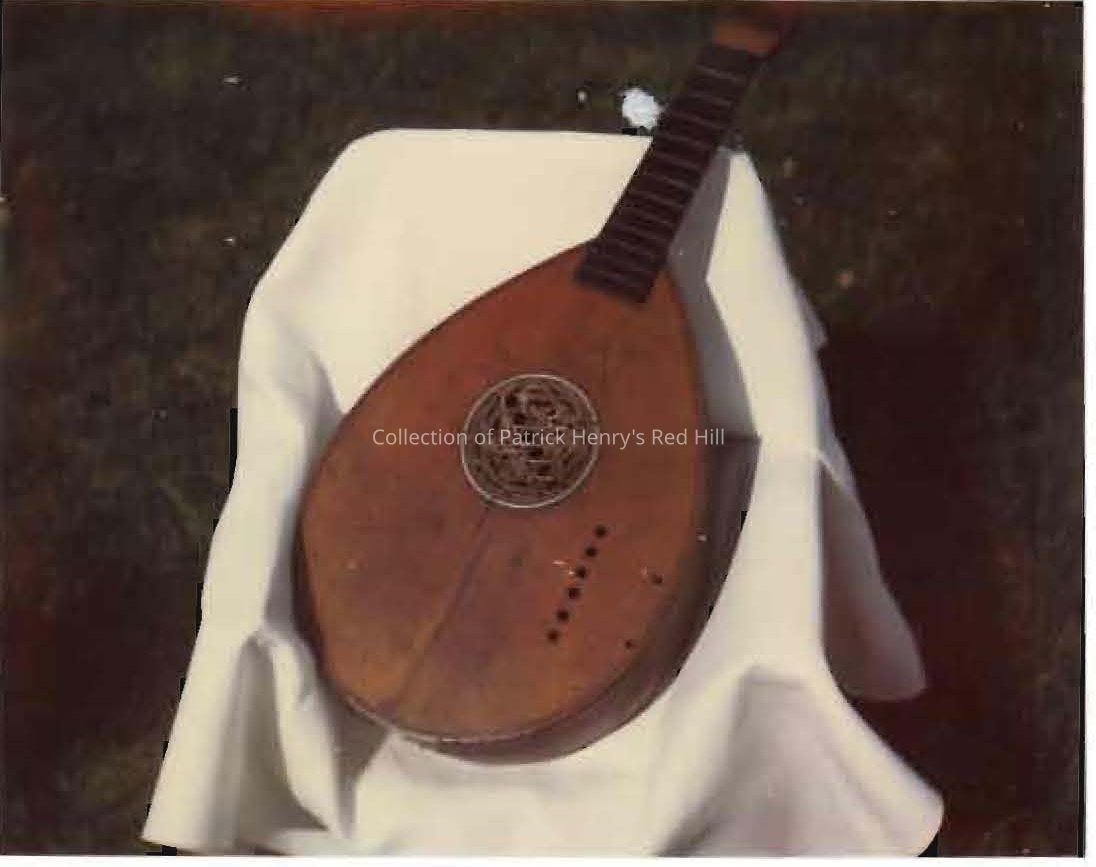Notes
This instrument was owned by the Henry family and is said to have belonged to Dorothea Dandridge Henry (1757–1831), Patrick Henry's second wife.
Also referred to as a pianoforte guitar and keyed cittern, the English guitar was a popular instrument in Great Britain and the colonies between 1750 and 1800. Christian Claus (active c.1783–1795) held the first patent for the English guitar, which included piano hammer-like mechanisms in the body of the instrument.
Claus began his instrument-making business in London around 1783 but fled his creditors to New York City, New York in 1789 where he continued making English guitars until around 1795. This instrument is a rare example from Claus' New York workshop.
According to family tradition, at Patrick Henry's death in June 1799, some of his belongings were given to his sister, Jane Henry Meredith (1737–1819), who lived with her husband Colonel Samuel Meredith II (1732–1808) at Winton, Amherst County, Virginia. It is said this guitar was among those possessions, however, this is dubious as Dorothea Henry outlived her husband and may have kept her guitar in her possession.
Tradition then says Jane Meredith gave the instrument to her son Major Samuel Meredith III (1765–1825) who lived in Kentucky near what is now Lexington. Major Meredith named his Kentucky home Winton after his father's home in Virginia.
The Henry guitar was passed down to the daughter of Samuel Meredith III and his wife Elizabeth Breckinridge Meredith (1766–1838), Letitia Preston Meredith Dallam (1789/90–1868). Her oldest daughter Frances Paca Dallam (1815–1907) inherited the instrument after marrying Dr. Robert Peter (1805–1894). Their son Hugh Peter (1854–1938) inherited the guitar and in turn, passed it on to his daughter Catherine Seaton Peter (1895/6–1964). Catherine Peter married James Howard Evans (1895–1969) in 1917. Howard Evans inherited the Henry guitar from his wife in 1964 as she died without issue.
James Howard Evans sold Winton on March 19, 1968. From March 26 to 28, 1968, he held a public auction selling his Patrick Henry artifacts, including this guitar. Robert (1926–2012) and Dianne Poindexter (1938–2015) from Ye Olde Curiosity Shoppe in Cynthiana, Kentucky purchased the guitar at this sale along with several other items. The Patrick Henry Memorial Foundation purchased the guitar from the Poindexters on October 1, 1968.
